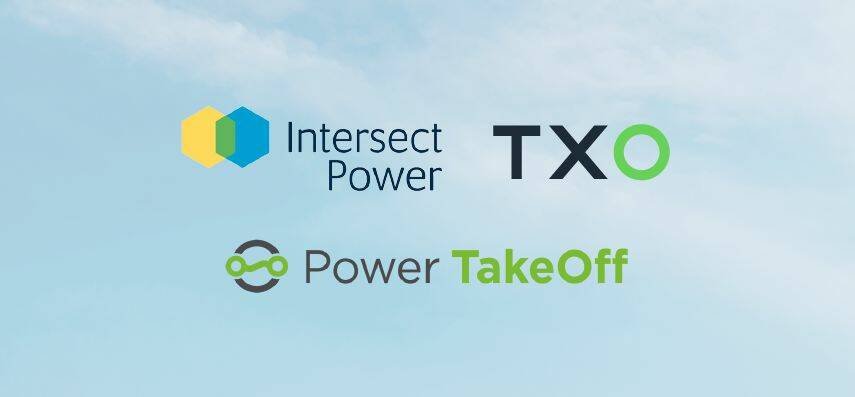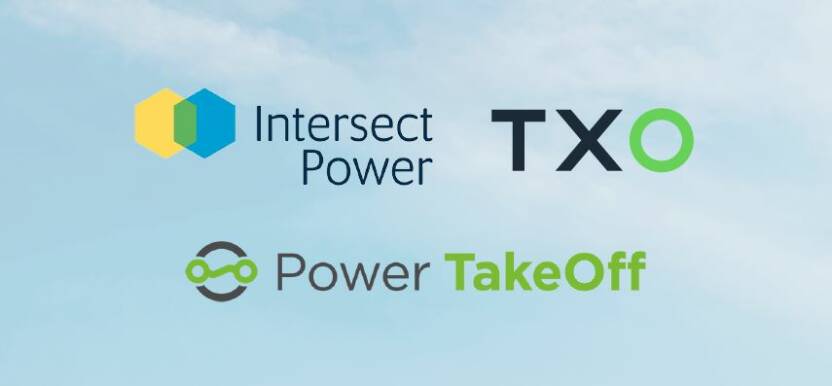
Impact Fund Annual Report
Investment Profiles
Portfolio Overview
Home
Spotlights

Contact the Impact Team

Visit Our Impact Strategy Page
WHAT WE OFFER
ABOUT US
FIRM UPDATES
Our Initiatives
Diversity, Equity & Inclusion
News
Insights
Strategies
Solutions
HL Innovations
Sustainability


We’ve partnered with Novata, an ESG and impact metrics collection and tracking tool designed for private markets.
Navigating the energy transition, Inflation Reduction Act & demand for sustainable infrastructure
Hamilton Lane Impact Fund II invested in three new companies in 2023
Case Study: Helping the Kenyan government plan for sustainable economic growth and climate resilience



Bridging the Gaps in Care for Patients and Providers: An Interview with Christopher Molaro, CEO & Founder

Contact the Impact Team

Visit Our Impact Strategy Page
WHAT WE OFFER
ABOUT US
FIRM UPDATES
Our Initiatives
Diversity, Equity & Inclusion
News
Insights
Strategies
Solutions
HL Innovations
Sustainability



Bridging the Gaps in Care for Patients and Providers: An Interview with Christopher Molaro, CEO & Founder

Hamilton Lane Impact Fund II invested in three new companies in 2023

Navigating the energy transition, Inflation Reduction Act & demand for sustainable infrastructure

"The Climate Impact Partners team consistently delivers expert advice, supported by comprehensive, well-researched reports and informative insights. That’s why we value their pragmatic, inclusive approach and longstanding experience in delivering robust, high-impact climate and development projects."
Dr. Pacifica Ogola, Director, Climate Change Directorate, Government of Kenya

We’ve partnered with Novata, an ESG and impact metrics collection and tracking tool designed for private markets.

This has helped to inform policy and measures to promote climate action and overcome barriers to change. At the same time, it attracted funding that allowed the government to advance its Climate Action Plan and Vision 2030 sustainable development goals.
The Solution
Firstly, the Company analyzed every proposed initiative in the Kenyan government’s Vision 2030 strategy, to identify the potential greenhouse gas footprint and climate risks. The Company recommended taking steps towards ‘decarbonizing’ the vision by moving from the proposed coal-powered electricity to solar and geothermal power.
Climate Impact Partners also reviewed the government’s 2018-22 National Climate Change Action Plan, which recognizes that climate change must be addressed if it’s to achieve the goals set out in Vision 2030. A raft of proposals included harnessing carbon finance to promote clean cookstoves and cleaner cooking fuels, incentivizing climate-smart agriculture, pursuing ambitious reforestation projects and moving freight by rail rather than road.
Wherever possible, the Company sought external funding via the UNFCCC initiative, known as the Nationally Appropriate Mitigation Actions framework, to turn their recommendations into reality.
Climate Impact Partners also prepared Kenya’s second National Communication to the UNFCCC ahead of the historic 2015 Paris Climate Summit, leading a national consultation of stakeholders across government, industry, agriculture, and academia. The Company analyzed Kenya’s economic circumstances and development challenges in detail, measured its greenhouse gas inventory and assessed its vulnerability to climate risks, as well as plans to reduce emissions and help people adapt to the effects of climate change.
Impact Opportunity
Climate Impact Partners (or “the Company”) acts as a trusted advisor to the Kenyan government on climate and development issues. The Company makes practical recommendations to help advance the country’s sustainable development journey, and attract funding for vital clean energy, food security and transport initiatives. The valuable insights Climate Impact Partners gives government officials are also helping to reduce climate risks and transform people’s quality of life.
Positive Impact Outcomes
Climate Impact Partners supported government officials in building a clear picture of climate risks and opportunities in Kenya. This has helped to inform policy and measures to promote climate action and overcome barriers to change. At the same time, it attracted funding that allowed the government to advance its Climate Action Plan and Vision 2030 sustainable development goals.
For example, partially as a result of this work, the government removed the VAT on clean cookstoves in recognition of their positive impact on both climate and health. This encouraged a dynamic cookstoves market, attracted more investment to cleaner cooking fuels and made the stoves more affordable.
Similarly, following these recommendations, the government is supporting a shift away from charcoal and helping people to climb the energy ladder by removing fuel duty on ethanol for cooking. The Company is working to remove the import duty and VAT too, while street-level dispensers for ethanol are making it easy for people to top-up their cooking fuel.
Climate Impact Partners’ focus on achieving sustainable development issues through NAMAs has helped the country to attract funding for clean energy, waste management and low carbon transport initiatives. The Company is also helping the government to fulfil its climate responsibilities on the global stage with specialist support, such as preparing the UNFCCC report.

Contact the Impact Team

Visit Our Impact Strategy Page
WHAT WE OFFER
ABOUT US
FIRM UPDATES
Our Initiatives
Diversity, Equity & Inclusion
News
Insights
Strategies
Solutions
HL Innovations
Sustainability


We’ve partnered with Novata, an ESG and impact metrics collection and tracking tool designed for private markets.
Hamilton Lane Impact Fund II invested in three new companies in 2023

Navigating the energy transition, Inflation Reduction Act & demand for sustainable infrastructure

Case Study: Helping the Kenyan government plan for sustainable economic growth and climate resilience


In what ways does NeuroFlow collaborate with researchers, clinicians, and/or health systems to continuously improve your approach and contribute to advancements in the field?
NeuroFlow’s infrastructure provides data analytics tools, a workflow management platform, and a means to engage users with treatment plans and assessments. This infrastructure is used by researchers and clinicians to both track outcomes and as a platform for enabling these important care models to occur at scale.
How does NeuroFlow balance objectives that span both financial performance as well as impact in the healthcare industry?
In order to make a difference in the healthcare industry in the United States, you have to both understand and appreciate the way it works and the incentives involved. Ensuring quality and safe care is the minimum requirement. But the reality is that it's not enough most of the time. The merits of the system can be debated, but the truth in today’s world is that healthcare is a business, and thus, financial ROI needs to be credible and incorporated into decision making. In addition to providing high quality and safe care to a population, there needs to be a mechanism to generate revenue and/or save money for payers and systems. NeuroFlow’s technology infrastructure both enables workflows that can be reimbursable for providers (aka ‘more revenue’) and ensures right care at right time leading to lower costs of care (aka ‘savings’), both of which are anchored in better overall outcomes and care.
How does NeuroFlow address the stigma associated with behavioral health issues, and what initiatives does the Company undertake to promote public awareness and education?
NeuroFlow addresses stigma in a few ways. First, measuring it more often and in the context of a traditional medical visit (like a PCP visit or an OBGYN visit) normalizes mental health and makes it as routine as getting your blood pressure measured or temperature taken. Second, providing tools and care options through mobile engagement solutions gives an option to get care that is more discreet and private.
NeuroFlow embarks with its partners (both health systems and payers) with educational campaigns and public service announcements normalizing the conversation around mental health. This depends on the partner but this can look like pamphlets, posters in common areas, and text/email invites and campaigns.
Last, since the NeuroFlow infrastructure is not a singular point solution but rather the platform supporting our partners’ programs, the content within the system that is user facing is completely configurable. Some of this content can be focused on normalizing mental health. For example, one of our federal government partners, the US Air Force, took videos of Airmen stating that they were getting help when needed, and embedded those videos into the NeuroFlow platform.
What are some near-term goals for NeuroFlow and where do you ultimately expect to see the Company in 5 to 10 years?
NeuroFlow is focused on ensuring that its partners - payers and providers - are knowledgeable on how to integrate mental health care into their workflows, and doing so in a way that is scalable and efficient, and how to leverage technology in the appropriate and effective ways to do that.
5 years from now, NeuroFlow’s aim is to achieve “mental health ubiquity” ensuring that wherever someone is that they are met with the appropriate resources at the appropriate time, and that the notion of integrated care is no longer some far-fetched innovative idea but something that is common and standard across specialties.
A specific example without NeuroFlow: John is being seen by his Primary Care Provider and getting treatment for his hypertension. John also struggles with anxiety. John mentions his anxiety to the PCP and because he doesn’t understand the severity or have the expertise in how to treat it, writes him a short-term prescription and gives him a referral card to make a therapy appointment. John leaves the PCP’s office and goes on his way with his hypertension and anxiety medication, and tries to make a therapy appointment. Two weeks later, John still has not been seen by a therapist because there are limited therapists that accept his insurance and there is a 30-day wait time. At the same time, John is stressed at work and is struggling with major anxiety, which causes his hypertension to spike and blood pressure to drop, forcing him to go to the Emergency Department.
With NeuroFlow enabling that PCP’s workflow: John’s data is assessed through NeuroFlow’s triage engine prior to his appointment populating an ‘alert’ in the PCP’s electronic health record flagging that John might be at risk for anxiety and that based on the data risk stratifies john as ‘at risk for moderate to moderately severe’ anxiety and makes clinical recommendations. NeuroFlow populates support resources and tools for John in between appointments, ensures he gets connected to a qualified and in-network therapist in a timely fashion, and continues to collect outcomes data on him that is sent back to the PCP. NeuroFlow’s triage engine runs its AI algorithms and identifies when his anxiety is spiking, and in real-time, a clinical support resource is notified to reach out to ensure John is supported. His care is coordinated at the appropriate levels and he avoids an unnecessary visit to the emergency room. Ultimately, John’s anxiety is managed effectively which also improves his hypertension leading to an overall happier and healthier John.
We should be explicitly clear though: NeuroFlow is not the treatment itself. NeuroFlow is measuring, identifying, and coordinating the right type of treatment to the right people at the right time and then following up with them in the course of their care plan.


How does NeuroFlow plan to and how has it already disrupted the behavioral health space? What standards has the Company set for digital care?
For the longest time, physical health and mental health have been treated separately, paid for separately, and just overall thought of in their own separate silos. We believe that it should be just health. NeuroFlow’s infrastructure has redefined the way that health care systems - both payers and providers - can scalably integrate both mental and physical health enabling better outcomes and true value-based care.
Much like Hamilton Lane, NeuroFlow relies heavily on data and data tracking. Can you tell us more about the importance of the data you track and factors used to determine positive patient outcomes?
Data is the story. NeuroFlow’s infrastructure runs on its “triage engine” which is a data analytics platform that can ingest a variety of types of data from insurance claims data to health record data to consumer generated data to clinical outcomes and assessments. The data is used to primarily accomplish three goals:
1.The identification of underlying mental health conditions
2. The risk stratification of a client’s population to coordinate the right type of care at the right time
3. Continue to measure and track progress to adjust care plans as appropriate
How does NeuroFlow enhance both the physician and patient experience?
NeuroFlow’s infrastructure provides a bi-directional feedback loop for both physicians and care team members to use as well as the end user (patients when in health care systems and members in payer populations). One way NeuroFlow is a unique behavioral health technology company is that it is primarily focused on integrating and supporting with non-behavioral health providers (e.g. Primary Care, OBGYN, Pain Management Specialists, Oncologists). In most cases, people with underlying mental health needs are not being seen by mental health specialists (whether that is a therapist or psychiatrist) but are seen by a medical doctor as listed earlier. Yet, that medical provider does not have the time or expertise to identify or understand someone’s complex co-occurring mental health needs, and thus, this becomes a burden on the provider, and leads to worse overall outcomes.
We should be explicitly clear though: NeuroFlow is not the treatment itself. NeuroFlow is measuring, identifying, and coordinating the right type of treatment to the right people at the right time and then following up with them in the course of their care plan.
Can you discuss how NeuroFlow was founded and the ultimate mission of the Company?
Adam Pardes and I co-founded NeuroFlow when we met in graduate school at University of Pennsylvania. I was at Wharton for my MBA and Adam was in a PhD program for biomedical engineering. Prior to business school, I had served as an officer in the US Army after commissioning from West Point. It was in that chapter, just after having completed a 12-month tour in Iraq serving as a platoon leader for 40 Soldiers, a Soldier in my unit took his own life as a result of his depression and PTSD. The loss of life aside, its own tragedy, the infuriating and saddening part of the story was that it seemed avoidable. The Soldier was seen by medical providers for other issues, and was referred to mental health support, but never accessed those care options, and never had his PTSD or depression accounted for or treated. No one followed up with him after those initial referrals nor checked in with him. And thus, this pervasive gap in care, where mental and physical health are treated separately, led to an avoidable tragedy.
What I learned years later while in graduate school was that this gap in care was not an issue relegated to Servicemembers and Veterans but was a more widespread issue throughout healthcare generally. Far too many times people that struggle with chronic medical conditions have underlying mental health concerns as well that go unidentified and/or untreated, leading to worse overall outcomes, higher costs of care, and lower quality of life.
And therein lies the ultimate mission of the company… to create a happier and healthier world by providing the technology infrastructure to enable healthcare systems to achieve value-based care by scalably bridging the gap between mental and physical health.



Contact the Impact Team

Visit Our Impact Strategy Page
WHAT WE OFFER
ABOUT US
FIRM UPDATES
Our Initiatives
Diversity, Equity & Inclusion
News
Insights
Strategies
Solutions
HL Innovations
Sustainability


We’ve partnered with Novata, an ESG and impact metrics collection and tracking tool designed for private markets.
Navigating the energy transition, Inflation Reduction Act & demand for sustainable infrastructure

Case Study: Helping the Kenyan government plan for sustainable economic growth and climate resilience


Bridging the Gaps in Care for Patients and Providers: An Interview with Christopher Molaro, CEO & Founder


Jérôme Kamm discusses our investment in TXO Systems, a B2B provider of telecom asset management and asset disposal services with end-to-end circular solutions for the sourcing, maintenance, reuse, repurposing/recycling and disposal of telecoms hardware.

Robert Duval discusses our investment in Power TakeOff, a software-based services provider that works with utilities to identify, implement, and achieve energy efficiency savings in the U.S.

Yuxin Shi discusses our investment in Intersect Power, a developer of large, utility-scale renewable energy with a current focus on solar and battery storage projects, primarily in the Western U.S.


Contact the Impact Team

Visit Our Impact Strategy Page
WHAT WE OFFER
ABOUT US
FIRM UPDATES
Our Initiatives
Diversity, Equity & Inclusion
News
Insights
Strategies
Solutions
HL Innovations
Sustainability


We’ve partnered with Novata, an ESG and impact metrics collection and tracking tool designed for private markets.
Bridging the Gaps in Care for Patients and Providers: An Interview with Christopher Molaro, CEO & Founder

Hamilton Lane Impact Fund II invested in three new companies in 2023

Case Study: Helping the Kenyan government plan for sustainable economic growth and climate resilience


Bipartisan Infrastructure Law
Inflation Reduction Act
Note: This exhibit reflects analysis of the appropriation figures contained in the Inflation Reduction Act, as well as those reported by the Congressional Budget Office and Joint Committee on Taxation. This analysis may differ from other analyses due to differences in methodology.
Source: Inflation Reduction Act of 2022, H.R. 5376, 117th Cong. (2021-22); Infrastructure Investment and Jobs Act, H.R. 3684, 117th Cong. (2021-22)
Other
Recycling
Smart tech
Clean energies
Grid and resiliency
Hydrogen
Efficiency
Clean transportation
Nuclear
Carbon
Clean electricity
Batteries and renewables


Chart 3: Energy funding by theme and source, U.S. $ billion
1Inflation Reduction Act.
2Includes lithium ion and existing hydro-pumped storage.
3Photovoltaics.
4Per annum.
Source: Inflation Reduction Act of 2022; McKinsey Power Solutions
341
485
880
1,245
235
445
413
+16% p.a.4
+6% p.a.4
375
349
235
Chart 2: Projections of U.S. installed solar and wind capacity, gigawatts


Solar PV3
Storage2
Onshore Wind
Post-IRA1
Pre-IRA1
Electricity
$185.4B
Electricity
Buildings &
Energy Efficiency
$50.9B
Buildings & Energy Efficiency
Transportation
$48.5B
Transportation
Envr. &
Climate
Justice
$31.5B
Environmental & Climate Justice
Agri., Forestry, &
Land Conservation
$28.4B
Agriculture, Forestry, & Land Conservation

Fossil Fuel Resources -$7.2B
Fossil Fuel Resources

Climate Research $3.0B
Climate Research
Other
$5.0B

Other









Note: Based on the estimates of the Congressional Research Service and Committee for a Responsible Federal Budgets. See here and here for more details. Sector breakdowns only include top spending items per category, negative figures for Fossil Fuel Resources reflect revenue raised from tax increases on the sale of government-owned resources, data retrieved March 6, 2023. Sources: Congressional Research Service, Committee for a Responsible Budget.
Infrastructure investors today are treating themes related to sustainability as core to their diversified portfolios. Brent Burnett discusses the evolution of energy transition investing and the growing opportunity set within private markets.
Increasing Demand for Sustainable Infrastructure Projects
Chart 1: A breakdown of $386 billion in climate spending and tax rebates
A View of the Inflation Reduction Act in Charts
We think the energy transition is one of the most exciting topics in investing today. Jackie Rantanen shares why it’s important and how to think about it in the context of private markets investing.
Energizing Times: Navigating the Energy Transition















